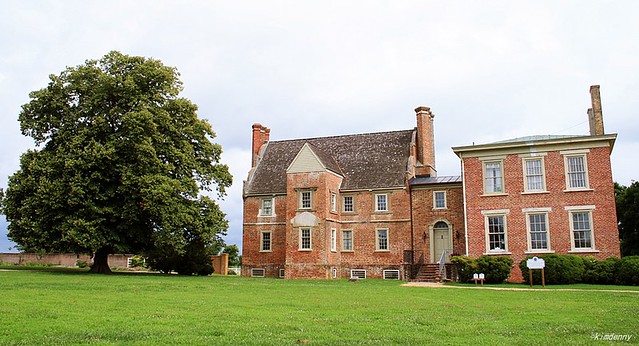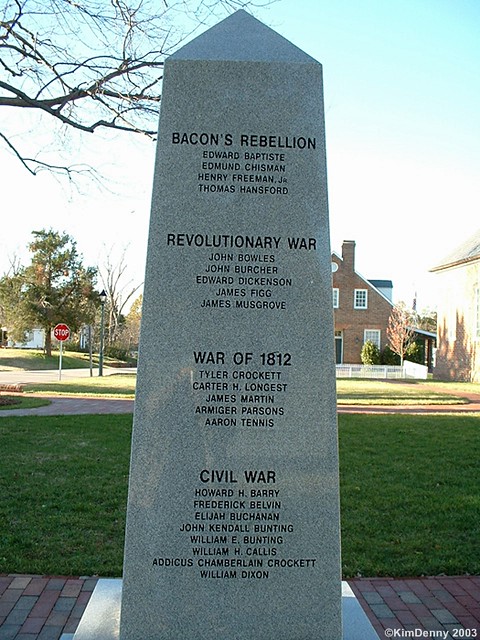There are many interesting stories in the history of the Commonwealth of Virginia that most people don't know, this is one of them.
Nathaniel Bacon was born in England in 1647. He is one of many of his family with the name Nathaniel, so it can be somewhat confusing when doing research on him. He moved to Virginia in 1673 and lived along the James River, south of Richmond. The capital of Virginia at the time was still Jamestown, the original settlement founded in 1607. The town of Richmond had yet to be founded(that would happen in 1737 by William Byrd, owner of Westover Plantation along the James). The governor of the time was William Berkeley.
Many of the settlements along the James River were set up by sponsors back in England and typically took on the name of the main investor. But there were not many people who were happy with Berkeley's leadership. There were numerous charges, including relations with the Native Americans to a personal dislike of the Governor by Bacon. In July 1676, Berkeley refused to retaliate against a recent attack by a local tribe so Bacon began gathering followers to rebel, not only against the Natives, but also against Berkeley.
Bacon and his group, which was quickly growing in number, set out to attack numerous Native villages, killing everyone. After several months, the group had grown to around 500 and they finally set out for Jamestown. On September 19, 1676, they burned every building in the capital to the ground. England sent out a number of ships to quell the rebellion and the group took to the west side of the James River to find a place to fortify. This is where Bacon's Castle comes into the picture.
This home was built in 1665 by Arthur Allen. It is likely the oldest brick building in Virginia. But it was never the home of Nathaniel Bacon, and it's likely he was not with the group when they fortified it in order to hide after their sacking of Jamestown. A long held rumor was that Bacon actually fled east, rather than west with the rest of his followers. The followers gave the historic home it's current widely known name. But Bacon was supposedly hiding in Gloucester, which is across the York River. It is here, it is said, that he died of dysentery on October 26, 1676. It was not known where he was buried as there were many people who helped Bacon hide after the rebellion. It still is not certain where he was buried, but it is likely it was somewhere in Gloucester.
The rebellion fell apart after Bacon's death. The rebels were captured, a number of them were hung. Berkeley returned to power, though not for long. He was recalled to England as the King feared another rebellion. Berkeley died the next year, in July of 1677, in London. Jamestown was rebuilt, but after another fire, the capital would move inland to Middle Plantation in 1699. Middle Plantation would change its name Williamsburg.
Today, Jamestown is a historical park, ruins and archaeological site. Bacon's Castle can be toured and is on several national historic registries. Williamsburg is a recreation and restoration of the historic town. Richmond is the capital of Virginia.
Yorktown has a memorial at their courthouse with the names of those from their county killed in conflicts of this country. It begins with Bacon's Rebellion and lists 4 men from York County who were killed: Edward Baptiste, Edmund Chisman, Henry Freeman Jr, and Thomas Hansford. Chisman(or Cheesman) died in prison, Hansford was hanged for participating in the rebellion.
Subscribe to:
Post Comments (Atom)




No comments:
Post a Comment